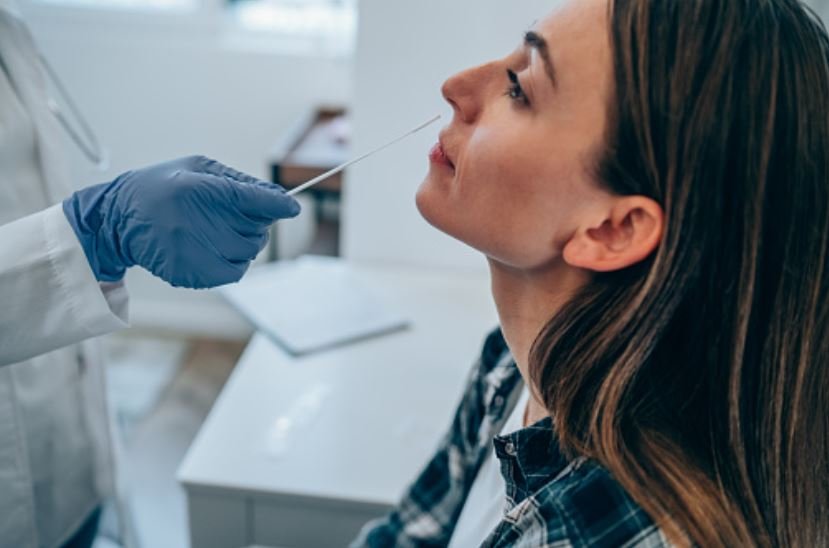Health
What’s the Difference between PCR Tests and Lateral Flow Tests?

In order to keep uninfected people safe from the infected ones and prevent the virus from spreading, individuals can leverage two kinds of diagnostic tests – PCR (Polymerase Chain Reaction) and lateral flow (rapid antigen) tests.
Rather than having to visit the healthcare clinic or labs to test yourself for the virus, you can also perform the tests at home by yourself. For this, you can easily find government-approved Lateral Flow test kits for sale online.
Whether you opt for a PCR or lateral flow test, you need to know their differences for better effectiveness and the right course of action that meets your expectations. Therefore, in this article, we have simplified the complex procedures and differences. Read below to learn!
[lwptoc]
What Is a PCR Test?
A swab for a PCR test is taken from either the nasal, upper throat, back of the throat, saliva, or sputum.
The key here is to amplify (or multiply) one virus DNA collected from the swab into billions to ensure the slightest traces of coronavirus genetic material are detected. That’s why it’s the gold standard for detecting the SARS–CoV–2 virus with 100% accuracy.
To explain the procedure in detail, the polymerase chain reaction technique is used. As soon as the sample is collected, the RNA (single-stranded DNA) is converted into double-stranded DNA by treating it with an enzyme.
The double-stranded DNA is then mixed and heated with polymerase (an enzyme) to convert it into two separate single-stranded DNA molecules.
The next step is decreasing the temperature, and another solution called primer is used to make sure polymerase sticks to the single-stranded DNA molecule and replicates it.
This way, you get 2 copies of the coronavirus DNA from the 1 RNA sample. The same cooling and heating process is repeated 30-40 times until there are one billion original sample replicas.
Pros and Cons
As there are a billion copies of the original RNA of the virus, the PCR test leaves no space for inaccuracy in detecting coronavirus, even if it’s in the scarcely detectable amount.
Therefore, it is ideal for asymptomatic people or if the symptoms have just started to show or fade away. You don’t even need to repeat the test, as the results are accurate.
The downside to PCR tests is that only lab experts can conduct this procedure because this requires expertise and the use of machines. The turnaround time is between 1 and 3 days and can cost anywhere between $70 and $100.
What Is a Lateral Flow Test?
A lateral flow test, also called a rapid antigen test, uses a test strip to quickly show a negative or positive result. It’s just like how a pregnancy test strip works.
When your body detects a foreign substance (called antigens) like bacteria, viruses, or toxins, it releases antibodies as immune system response.
A sample is collected through the nasal or upper throat for a rapid antigen test. That sample is then treated with a solution to separate cells. This liquid is applied to the test strip, which is pre-painted with antibodies specific to coronavirus.
If the same coronavirus antigens are found in the sample, the painted antibodies on the test strip will react the same way as in your body, and you will see a colored line which means you’re tested positive for the virus.
Pros and Cons
Rapid antigen or lateral flow tests are effortless to use at home by an individual. They are also pretty cheap compared to PCR tests (around $15). Moreover, you don’t have to wait for several days for results, as you get results within 15 to 30 minutes.
On the other hand, rapid antigen tests are not always accurate. Especially if you’re asymptomatic, or you have an early-stage infection, which means you have a small number of antigens in your body, the test strip won’t be able to detect the virus due to low sensitivity. Therefore, you may have to redo another test to confirm the results.
Check out: What Crimes Are Solved Using DNA Testing?
-

 Celebrity4 weeks ago
Celebrity4 weeks agoIs YNW Melly Out Of Jail? What Is The YNW Melly Release Date, Career, Early Life, And More
-

 Sports4 weeks ago
Sports4 weeks agoMore Than Just a Game: How College Sports Can Shape Your Future
-

 Tech3 weeks ago
Tech3 weeks agoAI Software: Transforming the Future of Technology
-

 Tech3 weeks ago
Tech3 weeks agoAll About Com. Dti. Folder Launcher: Features, Benefits, Tips, And More













